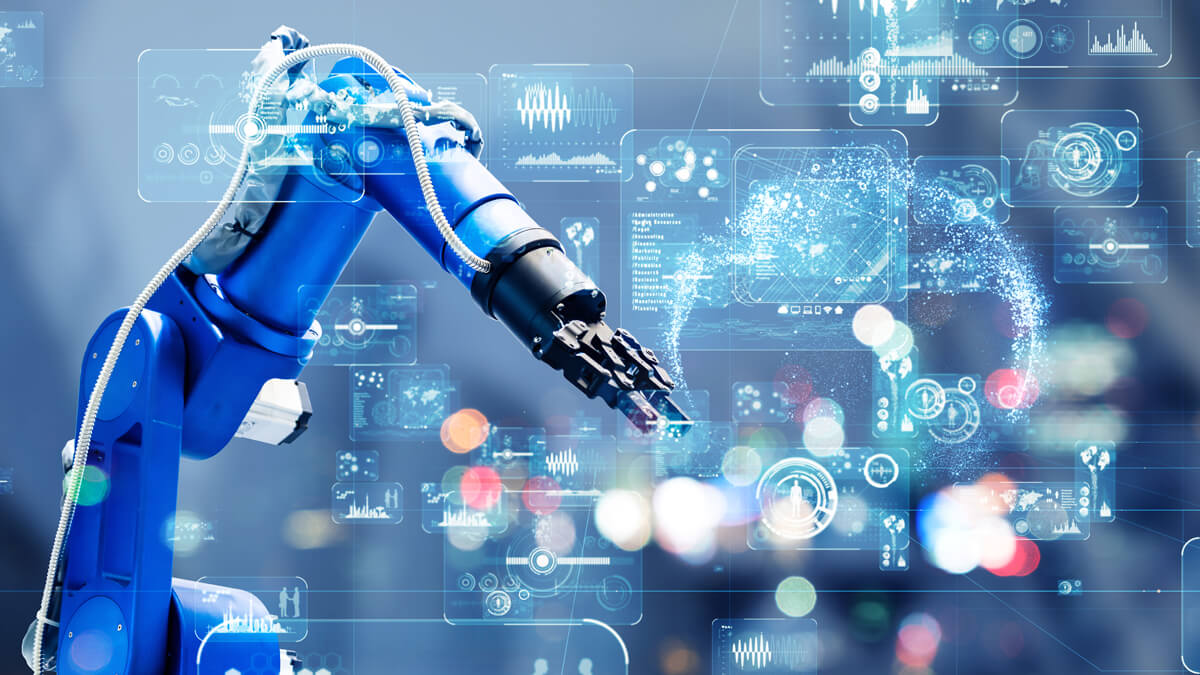The key technology building blocks for Digital Transformations are starting to fall into place but this doesn’t fully constitute what Digital Transformation actually is. As you head down the road toward Industry 4.0, let’s drill down further into some of the key aspects of Digital Transformation: ‘digitisation’ and ‘digitalisation’.
Digitisation, Digitalisation and Digital Transformations
Digitisation
Digitisation is the process described above – moving from an analogue system to storing this data in digital formats. These digitised systems are used in much the same way as the old paper-based systems they are replacing. Even the computer software on which these systems are built reflect that, such as icons to open and close files that resemble card file holders used in filing cabinets.
Digitalisation
Digitalisation is the process of using this digitised data in simpler and more efficient ways. This is not about changing the way you do business but improving the efficiency and simplifying what you already do. It should lead to a better experience internally, as well as for customers and suppliers. In other words, you will be doing what you have always done, but better!
Digital Transformation
Digital Transformation takes the next step beyond digitisation and digitalisation. It leverages these modern technologies to drive fundamental changes to the way we work or create new business opportunities altogether. In either case, this transformation should lead to greater efficiency and agility.
Digital Transformation – It’s a human thing
So, digital processes and Smart Technologies may be in place but this in and of itself does not constitute Digital Transformation. Digitisation and digitalisation are the foundations for Digital Transformations, but so too are some of the key Industry 4.0 technologies. These include the implementation of a wide range of sensors and data communication technologies such as 5G and LoRaWAN, robotics, Artificial Intelligence (AI) and Machine Learning (ML).
Digital Transformations – especially those that leverage the AI and ML – offer the chance to vastly increase the capacity for processing this increased data. It will also transform your operations and processes through previously unavailable data analysis techniques. Not only does this enhance your systems and processes, but also the roles and responsibilities of your workers and managers.
This human element of the Digital Transformation requires stakeholders from across the business to invest in the process. This cultural shift could prove to be more difficult to implement than the technological one.
Digital Transformation Benefits
Many of the benefits that Digital Transformation delivers are the same as those that drive digitalisation and automation, including:
- Faster and more efficient processes
- Increased capacity
- Reduced costs
- Improved safety, quality and productivity
- New analytics-based insights
Digital Transformations are not always implemented in isolation. Your customers and suppliers could be on this path as well thanks to this explosion of data availability. If a Digital Transformation is to succeed, you need to demonstrate the necessity and advantages to all potential stakeholders.
Digital Transformation – No guarantee of success
Change is difficult, and changes experienced during Digital Transformation can be more difficult still. Work by McKinsey & Company shows that transformation projects may only be successful in 30% of cases, measured by those engaged in the transformation on their own terms. Digital Transformation shows an even lower rate of success. Studies have shown only 16% say their digital transformations have successfully improved performance and equipped them to sustain change in the long term.
Projects in ‘high tech’ industries that use digital technologies do not often hit that 30% success rate, and more traditional industries may succeed 10% of the time. Smaller businesses (SMEs) will have a better chance of success, though.
This last point may hint at where failure could lie, and strategies to increase the chance of success. Digital Transformation projects are often inward looking. The driver of the project is the transformation itself where it becomes more of a digitalisation project than a transformation. Many are also wide ranging; looking to involve multiple business units or an entire enterprise.
Successful Digital Transformation then depends on committed, open and knowledgeable leadership. SMEs would benefit from the opportunity to put the right skills in place and empower its workforce
Digital Transformation in Manufacturing
So how can this Digital Transformation play out in a manufacturing organisation? It’s easier to see transformation in manufacturing through data driven digital technologies, including new ways of working with the supply chain to increase efficiency and reduce costs. The use of robotics is increasing in production lines and assembly, as is the availability of new sensor and communication technologies for machines, assets, and working environments. All generating vast amounts of data for analysis and decision making – in near real-time.
This data enables organisations to move from predictive to preventive maintenance, leveraging increased machine utilisation for improvements in quality and reductions in scrap.
Summary
Digital Transformation is not just a rollout of technologies. Choosing the right communications solutions and management platforms is important, but it needs these key factors to succeed:
- Committed and driven leadership
- ‘Tech savvy’ leadership
- Appropriately skilled and motivated personnel
- Fully engaged people at all levels
It is also important that the transformation itself is not the goal. There need to be sufficient external drivers, whether that be from customers or suppliers, to drive that transformation. The scope of any project should be narrow enough to facilitate a positive outcome. Success breeds success and so this approach can increase the chances of a favourable result for subsequent transformations.
Please visit the Chronos Times area of our website to read the latest Insights and Bitesize articles, learn about our attendance at recent Events and much more.




